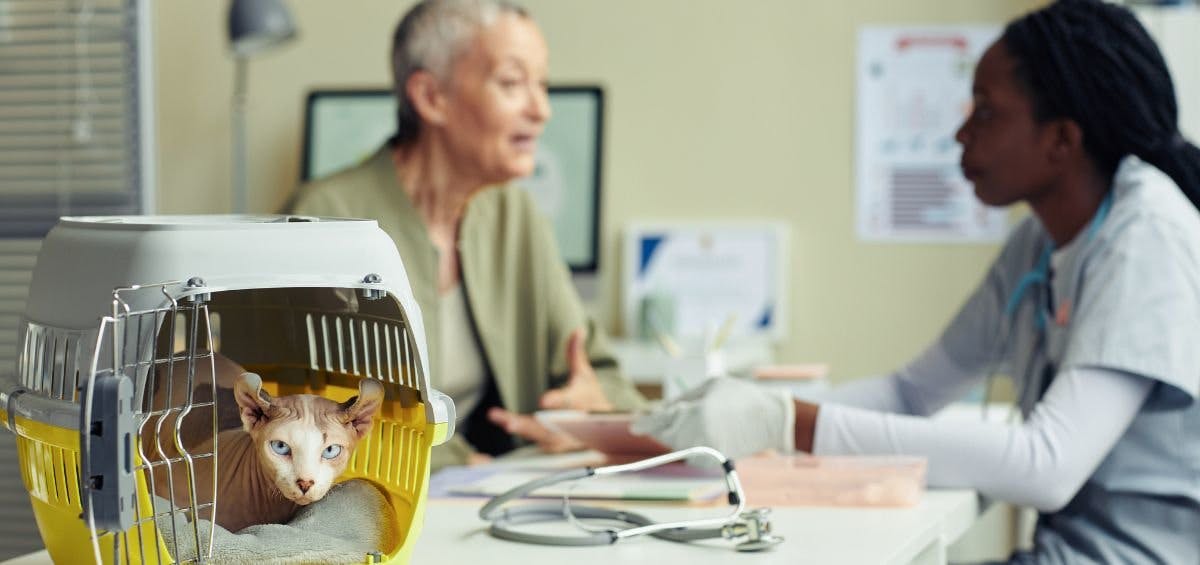Separating Cost From Care In Client Conversations
Associate Veterinarian, Speaker, Author - Penn-Ohio Veterinary Services and KMB Veterinary Media LLC
"If you really cared about my pet, you'd treat him. You're only in it for the money!" Veterinary clinics hear this accusation far too often. While those in the profession know this is not the truth, we must develop strategies to combat this perception to deliver the best possible care to both our clients and patients.
Understanding Why This Perception Occurs
We must strive to understand where this misconception comes from. In many cases, accusations of money-obsessed veterinarians occur in situations of high stress and limited finances, especially when life-saving care is needed. The problem is common, with over 50% of veterinarians facing cases limited by finances on a daily basis.1 The emotional toll is high for both veterinary teams and clients.
50%
of veterinarians face cases limited by finances every day
Emotions related to pet care are compounded by the fact that clients do not know what to expect when it comes to the price of veterinary treatment. They don't typically see the true cost of their own healthcare, so they have no frame of reference. Five hundred dollars for an examination, blood work, and radiographs is a large price tag for many pet owners, but it is a fraction of what human health care costs. Furthermore, for humans, health care is a right. Costs are government-subsidized when families can't afford essential care, while this is rarely the case in veterinary medicine.
No one wants to euthanize their pet, especially in an unexpected emergency or for economic reasons. And so distraught clients look for someone to blame. It is not the fault of veterinary clinics or team members. We must pay our staff, keep our lights on, and stock our shelves. Veterinary clinics are a business, and while clients may think that the money they pay goes directly into our pocket, many clinics’ net profit is less than 10 cents on the dollar while the rest goes to overhead costs.2
We did not create the problem, but we must strive to be part of the solution. The issue of affordable veterinary care is large, and improving access to care will not be an overnight solution. It will require the work of multiple individuals from many disciplines both within and outside of the profession. But at the individual clinic level, we can battle the perception of being "money hungry" by focusing on how we communicate about the finances of care.

Start with Care Conversations
One of the strongest ways that we can show clients that we aren't just "in it for the money" is to prioritize conversations about patient care and separate them from those about cost. While care always has a cost, our approach to these conversations can change a client's perception.
Consider the following situation: a distraught client brings their young, previously healthy dog into the clinic after witnessing them being hit by a car. At arrival, the Client Service Representative (CSR) pages for a triage technician. The pet is whisked away for evaluation and stabilization. The CSR is left to have the client fill out paperwork, obtain CPR orders, and apprise the client of an initial estimate.
Which would you prefer to hear if you were in this client's shoes?
- Option 1: It can be up to $500 for initial stabilization. A veterinarian is with your dog now and will update you soon.
- Option 2: I know this is a very scary situation. Jake is with our veterinary team now. They will evaluate him, start life-saving treatments if needed, and will update you shortly. We like to let people know that the initial treatment can cost up to $500.
Both options convey the same general information. The second only takes a few more seconds to say but acknowledges the client's fears and gives more detail about what care their dog is receiving before mentioning the cost. It is a more compassionate way to deliver the information and prioritizes the discussion of care.
The same approach can be utilized by veterinarians who are discussing diagnostic and treatment plans. Start with a thorough discussion of your recommendations, reasons behind each recommendation, and the pros and cons of different options. Once the medical–or care–portion of the discussion has happened, then cost can be discussed.

Utilizing the Whole Team in Financial Conversations
One of the most effective ways of separating conversations of cost and care is to have different members of the patient care team lead these discussions. Here is a breakdown of how each member of the team can participate in financial conversations during a typical appointment:
- Client Service Representatives: These individuals are the first point of contact for most clients and should be prepared to answer general questions about payment policies and alternative payment options. They will rarely discuss specific estimates but should be provided with a general range of estimates for common procedures or presenting complaints (i.e. vomiting or urinary issues) that can be given to clients over the phone.
- Veterinary Assistants and Technicians: These team members are often the ones collecting patient history and may hear of financial concerns before the veterinarian. Maintaining compassion and assuring
- Veterinarian: The doctor is responsible for directing the care side of the conversation and should limit their discussion of finances when possible.
- Credentialed Veterinary Technicians: Because of their medical training, these team members are an ideal choice to review treatment plans and detailed estimates with clients. They are often able to answer client questions while reviewing the plan. Most clients find their input invaluable as they navigate the decision-making process around their pet’s care.
- Practice Management Team: Managers should provide support for all team members and can be called upon in cases where a client becomes upset or abusive around the finances, especially if basic de-escalation methods have failed. It’s essential that managers advocate for their team members and maintain a consistent “party line” on payment policies.
You can help prepare every team member for their role in discussing client finances in two ways.
-
First,
provide communication training for all team members on basic
communication skills. Focusing on skills such as open-ended questions, reflective listening,
non-verbal communication, and empathy can be incredibly impactful. It’s also
helpful for team members who will be reviewing estimates and collecting
payment to receive some basic training in de-escalation and how to handle an
upset client.
- Second, your clinic can prepare scripts that answer common questions about financial policies and payment options. Team members can use scripts as a starting point and personalize them as they grow more comfortable with these conversations. This will ensure a consistent, compassionate answer is coming from each team member. Designated team members, such as CSRs, should also be trained to help clients through the application process for third-party payment options that are accepted by your clinic. Some examples might include installment plans, cash discounts, direct payments from pet insurance providers, and veterinary financing solutions.
Just as all members of the veterinary team have a role to play in the daily operations of the clinic, every team member plays a role in optimizing patient outcomes through having compassionate conversations about the finances of veterinary care.
References
1. Kipperman BS, Kass PH and Rishniw M. “Factors that influence small animal veterinarians’ opinions and actions regarding cost of care and effects of economic limitations on patient care and outcome and professional career satisfaction and burnout.” J Am Vet Med Assoc 2017; 250:785-94.
2. Keef, Cristina. “The Complex Cost of Veterinary Care.” PVMA, November 22, 2017. https://www.portlandvma.org/pet-owners/the-complex-cost-of-veterinary-care/.
A Team Approach to Financial Conversations in Clinical Practice
Over the next several months, Dr. Boatright will explore ways to help reduce the stress of financial conversations and help to prepare pet owners for the costs of pet ownership — both expected and unexpected.
Do you want to find the best pet insurance?
Let's analyze your pet's breed, age, and location to find the right coverage and the best savings. Ready?
Analyze My PetAbout Pawlicy Advisor
The pet insurance marketplace endorsed by veterinarians, at Pawlicy Advisor we make buying the best pet insurance easier. By comparing personalized coverage and pricing differences we can save you a ton of money, up to 83% in some instances!
Instantly Compare Pet Insurance Plans
Guides
Determine If Pet Insurance Is Worth It
Comparison Charts
Find Your State
Dog Insurance
Associate Veterinarian, Speaker, Author - Penn-Ohio Veterinary Services and KMB Veterinary Media LLC
Dr. Kate Boatright, VMD, works as a small animal general practitioner, freelance speaker, and author in western Pennsylvania. Since graduating from the University of Pennsylvania with her veterinary degree in 2013, she has worked throughout Pennsylvania as both a general practice and emergency veterinarian. Both in the clinic and outside of it, Dr. Boatright enjoys building relationships with her clients and educating pet owners on how they can keep their pets as healthy as possible. She loves being a veterinarian and educating students and colleagues on wellness, communication, and the unique challenges facing recent graduates. Outside of the clinic, she is active in many veterinary organizations, enjoys running, watching movies, and playing games with her husband, son, and cats.
